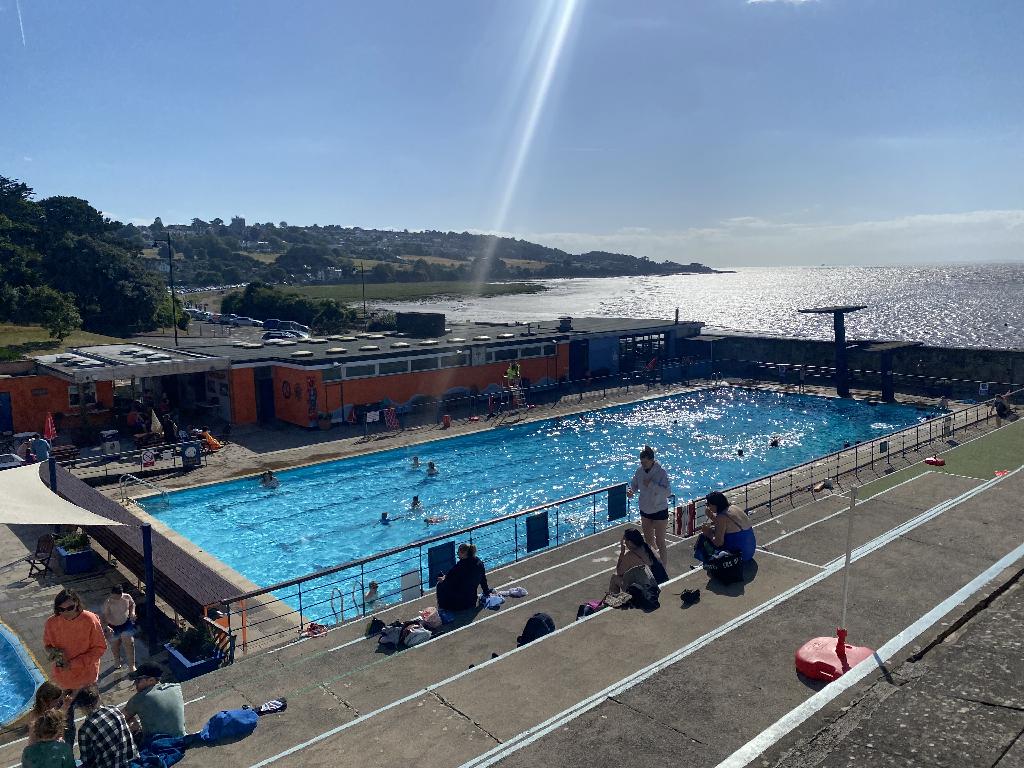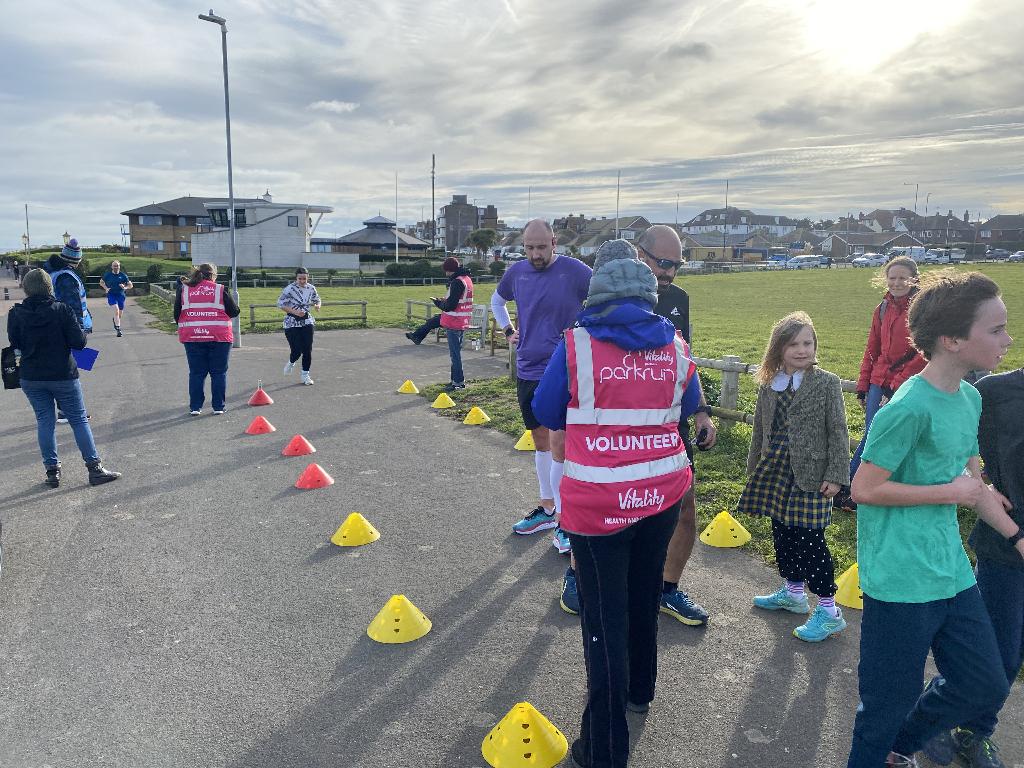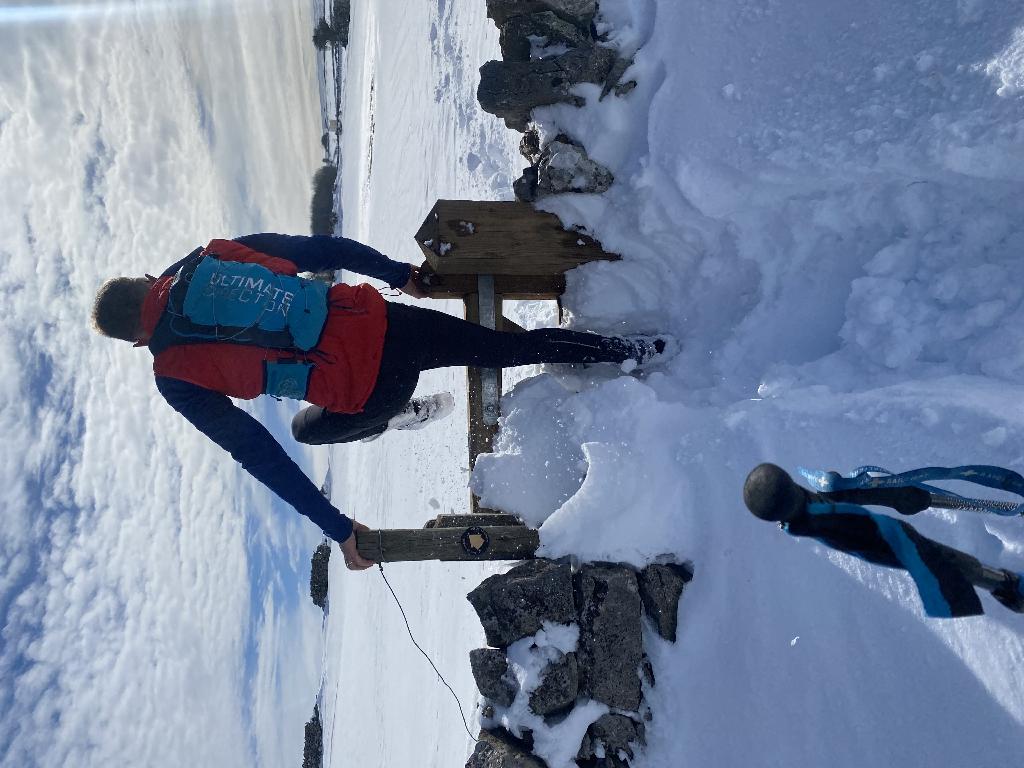Barriers (Part 10)
Posted by Jeremy Windsor on Aug 4, 2023
Over the last couple of months I've posted a series of articles that have taken a look at the barriers stopping people from enjoying the outdoors. Whether it's a person's gender, ethnic background or medical history they can all get in the way. I've tried to show that mental health plays a big part too. Researchers working with Parkrun have shown that confidence plays a part in running, even short distances, with many staying away citing concerns about running in public and not wanting to go alone. This series has also highlighted a number of physical barriers - ranging from the presence of tics to a lack of toilets and childcare. Nevertheless solutions can be found - not only the success of the aforementioned Parkrun but also the many events, groups and activities that are now available. Cold water swimming anyone? In this post we're going to hear from Christian Donlan. After living with multiple sclerosis for many years Christian used the likes of Couch to 5k, Strava and Parkrun to get him running. This is a very contemporary account of how someone with a chronic illness can discover exercise for the very first time. I hope you enjoy it...
I have always envied runners. For years I would watch them scattered along the seafront as I rode into Brighton on the top deck of a bus. Runners captivated me. I envied their cheerful solitude and metronome grace, arms tracing neat rhythms in the air. I envied their focus: they found the time in the daily muddle of work and family to be out here with the sky and the ocean breeze. Someday, I told myself, I will join them.
A strange ambition, really. I was never the most active person; I never played sports or learned to swim. Then, almost a decade ago, I got multiple sclerosis. MS is a disease in which the coating of cells in the central nervous system is damaged, disrupting the transmission of messages. It causes symptoms from mild confusion to paralysis, and can affect almost all parts of the body, but it frequently leads to balance problems and muscle spasticity. Not an ideal situation for a runner, although I should add there are great athletes who have MS, such as sprinter Kadeena Cox and 400m hurdler Lina Nelson.
I was 35 when I was diagnosed. I stumbled from GP to specialists, from MRIs to neurology wards. I was lucky, though. With careful treatment, its progress was slowed. MS was not over, but it became something I might exist alongside. In the thick of symptoms, I had felt jarringly, vividly alive; emerging from that, I wanted to make the most of whatever came next.
So I woke up one spring morning last year, firmly into my mid-40s, with hundreds of middle-aged worries teetering over me, and I realised with surprise that not one of them had anything to do with MS. I realised I wasn’t going to die that day. And I realised that, if I wanted to, I could run. Was I too late?

The latest Active Lives Survey (2021/22) has shown that activity levels have started to recover since the Covid pandemic. 63.1% of adults are "active" (defined as undertaking 150 minutes of exercise each week) whilst 25.8% are "inactive" (defined as undertaking less than 30 minutes of exercise each week). These figures are an improvement on previous results - there are now 1.5 million more active adults than in 2015/16
A runner needs a goal. I had a simple vision of my future self lacing shoes, leaving the house, picking a direction and running. No marathons, just running for half an hour, which I read puts you in 5km territory.
On a sharp April morning I downloaded the Couch to 5k app. This takes you from not running at all to running for 30-minute chunks in nine weeks: three runs a week, interspersing intervals of walking. It worked, I gathered. My brother and colleagues had done it.
With the app downloaded, I pulled on threadbare Converse, which even I was pretty sure weren’t made for running, a T-shirt and joggers bought for a Halloween party. I headed for a park, the ground squeaky with dew.
The first Couch to 5K session is short: 60 seconds of running followed by 90 seconds of walking, repeated seven times. I told myself this was nothing, although I sensed panic building. Would MS re-emerge and flatten me? I tried to empty my head. Warm-up done, I resettled my wife’s headphones over my ears and ran.
I laughed out loud at first. For those startled opening seconds, my body felt rickety and preposterous. There’s no future in this, I thought, as my legs juddered ominously. Was this MS, or was it years of sitting around? I ran for 20 seconds, feeling like an idiot. Someone’s going to stop me, I thought. Can you be arrested purely for doing something so obviously out of character? But then I reached my first corner and turned.
The rickety feeling didn’t disappear, but I suddenly understood that it wasn’t anything I recognised from MS. It was movement, speed and the thudding of feet. I was running, each moment feeding the next. The following 40 seconds passed in a rush, and I was annoyed to have to walk for an interval afterwards. This first session rolled on, easy, then tricky. By the sixth interval I was drained, but determined to finish.
The joy as I stumbled home, the voluble cheer that I felt for the rest of the day as I chattered mindlessly while my daughter did her homework, was something I was not prepared for. And the feeling returned after the next runs, each preposterous at first, then simultaneously exhausting and exhilarating.
I learned a lot in those initial sessions. I got used to the kind, conspiratorial voice of the writer Sanjeev Kohli in my ear, speaking through the app, telling me when to run or walk. I learned the times I’d have the park to myself. Also, I was starting to see runs in terms of two halves. For the first half I was cheerful and poised, padding through a Jimmy Stewart world, nodding at postmen and smiling at angry little dogs. For the second half I was sweaty and stumbling, an escaped convict pursued over moors by bobbies with bloodhounds. The task was to extend the first half indefinitely.

During the pandemic the number of adults in the UK running at least twice in the previous 28 days fell dramatically - from 16.9 million (2018/19) to 11.9 million (2020/21). However there are signs that this figure is improving - in 2021/22 this had risen to 15.1 million
As I went on I picked up another app, Strava, which tracks runs and gave me an overview of the tiny distances I was suddenly covering every week: 2.4km, 2.8km. The app turned each run into a visual trail, superimposing my wayward paths on to the landscape I ran through, like seeing my body’s handwriting.
But there were other loops. I got visual migraines, arcs of jangling golden lines that felt like a rip had formed in my vision. Familiar since my diagnosis, the regularity of them was new. As I ran, getting steadier and more confident, I would wait for them to ignite.
I also started to sense the contours of MS inside me. It wasn’t pain, although spasticity could make my calves so tight they felt like nasty little stones glued to my legs. It was more the sense that I was running within a boundary. I could go so fast but no faster. Maybe I would find that I could go so far and no farther. Was this boundary real? I couldn’t tell.
Three weeks in, my knees started to ache. My wife suggested the Converse had to go. I bought my first running shoes. It felt like a breakthrough: my bad knees had nothing to do with MS. This was just part of running.
I had discovered I liked to run, loved the chummy exhaustion and the impact of my feet on the ground. The knee pain had gone and I sensed the special collaboration of exercise: a coming together of all the pieces of me. If I hadn’t had enough water beforehand, my throat would tell me. If I neglected my breathing, my lungs would tell me. My body also sent warnings at times. If my balance was bad, I’d lurch and stumble. Time to turn back, ceding a temporary victory to MS.
After runs I came home frothing with ideas: flavour combinations, books to read, old friends to get on the phone. I wanted to know about oil painting, the names of the birds I’d seen and the trees I’d passed. At its best, running is like being loaned someone else’s brain.
By the end of week five I reached a run I simply could not do: 20 minutes, no intervals. The joy was in me, the energy was not; I had outrun my willpower. This is where the weeks started to stretch into months. From week five, I went back to week four, then three.
Soon I was stuck, orbiting weeks three and six. Late in a repeat of week five, Kohli told me: “You can call me Sanj now.” I almost wept. He’d known me for five weeks, so it seemed appropriate to him. But I had known him for 20 weeks.
I hated to be out of step with Sanj. He’d compliment my running, but he could not tell when I’d stopped and decided to walk. As I’d stagger about, defeated, I’d hear him say, “You’re doing really well!” or, “I’m proud of you!” My heart would break a little, as I had lied to Sanj.
To get unstuck, I borrowed a trick I had used with MS. Faced with strange new symptoms, I tracked them in a notebook. So I began a running journal, searching for a simple formula for success. “W3D3, energy bar, water, music not podcasts. Good(ish).”

Adults with a disability or long term health condition are less likely to be active than other adults in England (47.5% vs 68.1%). However the number of active adults in this group has risen by almost 4 percentage points since 2015/16 suggesting a move towards engaging these individuals
In amongst the repetitions and intervals, I glimpsed something important. The teetering tower of worries that loomed overhead each morning: couldn’t I tackle it in the same incremental way? It was not the complete solution to the problem, but at least it was a start. A friend had told me that mixing running and walking is sometimes called jeffing, named after Jeff Galloway, one of the running coaches who popularised it. Today I jeff my way through many things in life.
And then it happened. Fortysomething weeks in, on one clear winter morning, I ran 5km without stopping. A colleague had recommended parkrun, the 5km meet-ups held around the world at 9am every Saturday. It was a revelation. All of us together. Encouragement and kindness. I was re-energised.
I’d love to say I barely noticed my first full 5km, but I was calculated in grinding it out. For weeks I stalked that 30 minutes, using my journal to spot the point I got tired, then working out how to get past it. Mantras, the right soundtrack – I used every trick. Success felt fantastic. Actually, I felt a bit sick, but then it felt fantastic. I staggered away, thinking: done. I have graduated.
I hadn’t, of course. Every run is different. While I’d mastered parkrun for a day, solo running still required jeffing. Parkrun still does, too, most Saturdays. But even on a wonky run, I can look around and think how much I did not know when I started. The qualities of the birds. What to do with a stitch. What 10 minutes feels like when you are paying attention to every breath. I find it incredible to think that I have run for 5km without stopping, even if I can’t do it reliably.
And I find it incredible to think that I have had MS in my life for almost 10 years. I still fall into the bad habit of thinking illness is binary: you were well, now you are ill. But illness changes, and I can see that when I look at it through the lens of running. My first years with MS were all about accepting the rhythms it forced on me. For the past few months, I’ve been confident enough to push back, just a little.
I started Couch to 5K in April 2021, and I hit 5km in February 2022, which is an interesting response to a nine-week programme. I often marvel at the pleasure I have found in something I’m not particularly good at. Struggling with 5km, struggling against MS, or being in my 40s, or just being me, has allowed running to turn into a genuine habit. Hitting 5km without stopping might be a rarity, but I’m in this for good. In every sense, I’m going to run for as long as I am able to.
Thanks to Christian and The Guardian for permission to reproduce this extract.
The first of the "Barriers..." posts can be found here.
Thanks for reading this post. If this is your thing why don't you take a look at other posts on the blog? Better still, why not join the British Mountain Medicine Society? More information can be found here.
For more information about the University of Central Lancashire's Diploma in Mountain Medicine (DiMM) take a look at this.
Comments
Leave a comment.
Leave a comment.



 )
)